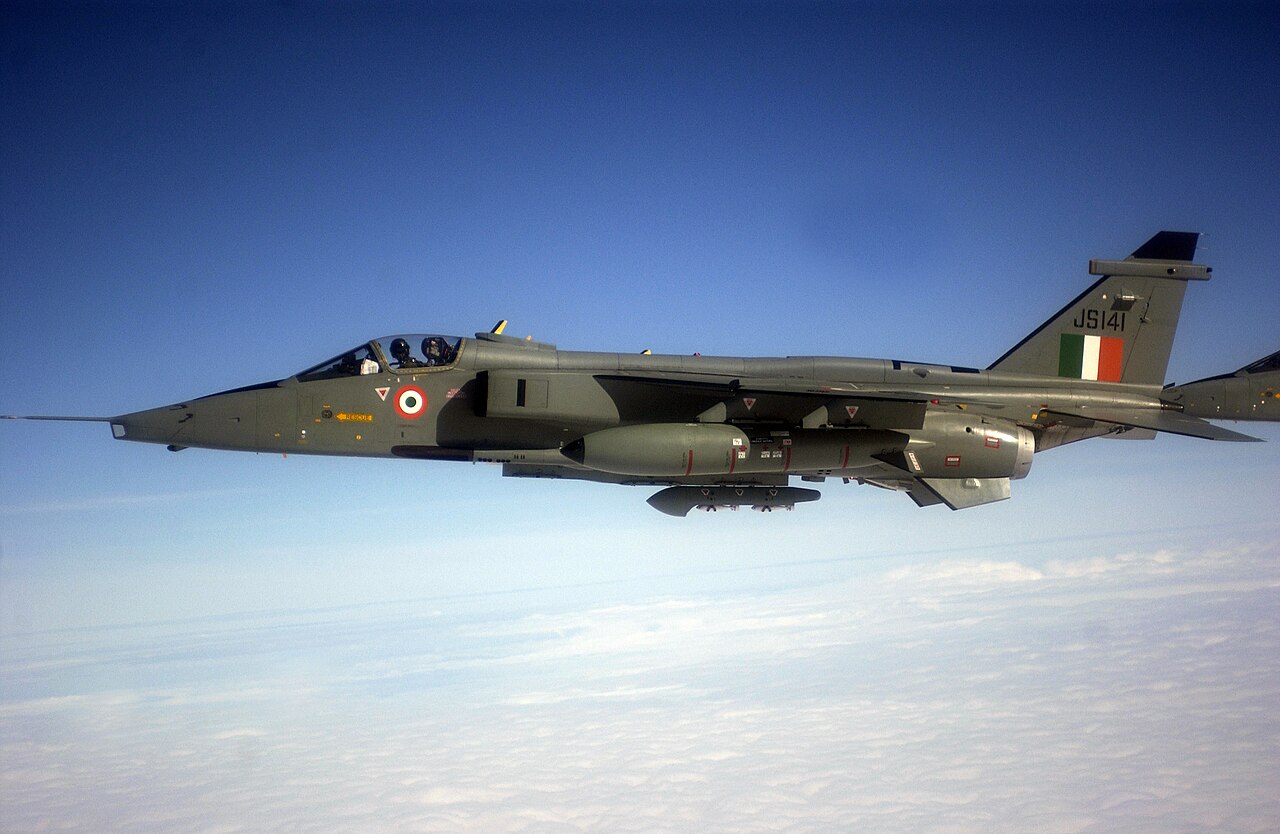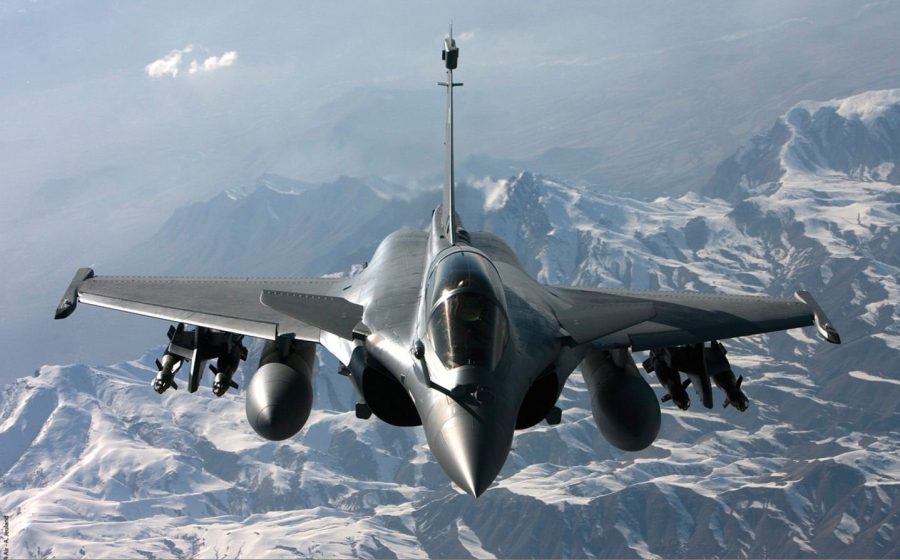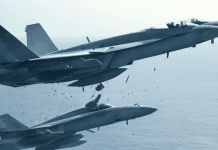The barbaric terrorist attack in Kashmir on April 22, claimed by an offshoot of a Pakistan-based terrorist organisation, has triggered internal calls for military action against Pakistan. If India decides to launch air strikes against Pakistan or on terror hideouts, the IAF (Indian Air Force) could deploy a “very rare trio” of French-origin fighter jets.
The Islamic fundamentalist outfit, “The Resistance Front”, which has claimed responsibility for the heinous crime, is an offshoot of the globally banned but Pakistani Army’s well-nurtured terror group Lashkar-e-Taiba (LeT). Pakistan has denied its involvement in the attack, but the country has been known for backing terror outfits operating against India.
Soon after the gruesome attacks in Kashmir, New Delhi quickly retaliated with a slew of measures, including removing ambassadors, revoking visas, suspending the crucial Indus Water Treaty, and blocking the key border crossing, among other things.
The Indian Defense Minister Rajnath Singh has promised a “strong response,” promising to take action against the perpetrators as well as the masterminds of the “nefarious acts” that took place on Indian territory.
The statements have insinuated that a military response may not be off the table. The opposition in India has also stated that it backs the government on whatever action it takes against Pakistan. Thus, the support for a military action against the neighbour is near unanimous.
India has launched air strikes in response to terror attacks before.
Following the September 2016 attack on Uri, which claimed the lives of 19 Indian soldiers, India launched “surgical strikes” across the Line of Control (LoC), against what it claimed were militant launch pads in Pakistan-controlled Kashmir.
Similarly, after an attack on an Indian paramilitary force convoy in Pulwama in 2019 that resulted in the killing of 40 personnel, India launched airstrikes against an alleged militant base in Balakot inside Pakistan in February 2019. This was the first Indian deep strike against Pakistani territory after the 1971 war.
In the Balakot strikes, two French fighters, the Jaguar and Mirage, were used. The Russian-origin Su-30, MiG-21, and MiG-29 were also part of the operation.
If India decides to launch a military operation against Pakistan, the IAF is likely to field a very rare combination of three different but powerful generations of French-origin combat jets — the SEPECAT Jaguar, Mirage 2000, and Rafale.
France is the only country that is believed to have used all three fighters in operations in Mali. The French Air Force’s strategy of maintaining a mix of legacy and modern aircraft enabled such deployments, especially during the transition period when the Jaguars were still operational.
The Deep Striker SEPECAT Jaguar
The SEPECAT Jaguar is a low-flying, sea-skimming fighter-bomber developed jointly by the UK and France. The aircraft has been decommissioned everywhere except India, where the IAF remains its operator.
Christened ‘Shamsher’ by the IAF, SEPECAT Jaguar is a supersonic attack aircraft designed for close air support and nuclear strike roles. It forms an important part of India’s nuclear triad and has been serving the nation for more than 45 years, with an ex-IAF Jaguar pilot debating against its retirement. The full article can be read here.
The IAF’s technological capabilities were significantly enhanced when the Jaguars joined in 1979, thanks to their precise weapon aiming systems, advanced attack capabilities, and navigation systems. The IAF was mighty impressed by the aircraft’s dual engine, which improved its survivability and capability to operate from short, partially built airstrips.
The Jaguar showcased its combat potential during the Kargil War in 1999 when it dropped both unguided and laser-guided bombs.
The IAF characterized the aircraft as a “deep penetrating strike aircraft.” Later, during the IAF’s Balakot strikes inside Pakistan in 2019, the Jaguars played a decoy to lure the Pakistan Air Force’s F-16s away from the target, which allowed the Mirage 2000s to breach Pakistani airspace and launch strikes.

Even today, despite its old age, the Jaguar remains relevant because the IAF has adopted it for medium-altitude stand-off strikes.
Notably, the Russia-Ukraine war further highlighted the importance of low-level penetration in contested airspace. For instance, to avoid detection, Ukrainian fighters fly to their standoff weapon launch positions at extremely low altitudes, below the enemy’s radar horizon. They zoom higher as they get closer to the launch location, fire their weapons, and then “hit the deck” again.
Jaguar’s “lo-lo-lo combat radius of action” is 350 nautical miles (650 kilometers), which means it can travel this distance while flying low. This is one of the highest for low-flying strike aircraft, as previously explained by the EurAsian Times. The Jaguars are expected to remain in service for the next decade or so.
A few years after it bought SEPECAT Jaguar, the Indian Air Force (IAF) also purchased the Mirage 2000 fighter jet from France. The two fighter jets have formed the mainstay of the IAF since and performed spectacularly.
The Combat Hardened Mirage 2000
In 1981, the United States approved the sale of F-16s to Pakistan as part of an aid package. At the time, India also urgently needed to upgrade its combat fleet, and an order for the French Dassault Mirage-2000 was placed in 1982.
These jets have performed admirably against Pakistan in the Kargil War and the Balakot airstrikes. The ground-attack specialist fighter remains the IAF’s crucial asset despite nearly four decades in service.
These fighter jets have dealt multiple heavy blows to Pakistan.
In 1999, when the Kargil War broke out, the MiG-21s and MiG-27s failed to dislodge the heavily entrenched enemy positions. This is when the IAF decided to use its most deadly aircraft in its arsenal, the Mirage 2000, to drop laser-guided bombs on Pakistani targets, including Tiger Hill, Tololing, Point 5140, and a Pakistani supply station in the Batalik area.
The precision with which the Mirage-2000 destroyed enemy positions and their supply lines was so remarkable that the Indian Army headquarters sent a message to the IAF.
The message read: “You guys have done a wonderful job. Your Mirage boys, with their precision laser-guided bombs (LGB), targeted an enemy Battalion HQ in the Tiger Hill area with tremendous success. Five Pakistani officers were reported killed in that attack, and their Command and Control broke down — as a result of which our troops have walked over the entire Tiger Hills area. The enemy is on the run. They are on the run in other sectors also. At this rate, the end of the conflict may come soon.”
More recently, on February 26, 2019, 12 Indian Mirage 2000s struck a Jaish-e-Mohammed (JEM) terror camp in Balakot, located in the Khyber Pakhtunkhwa region of Pakistan. The Government of India released no official death toll, but the then Indian Home Minister Rajnath Singh hinted there were 300 casualties in the operation.
However, Pakistan rejected all the claims.

While the IAF preferred the more advanced Su-30, it opted for the Mirage-2000s for the mission because they have a smaller radar cross-section, making them tougher for the enemy to detect.
Second, the Mirages were compatible with the Israeli-made Spice 2000 bombs, which are sophisticated, laser-guided, GPS-enabled systems with the ability to pinpoint enemy installations from a distance.
The IAF plans to replace the Mirage 2000 with Tejas Mk II. However, due to the Tejas MkII’s development and manufacturing delays, the IAF has also extended the service life of its Mirage 2000s, potentially into 2040.
The ‘Game-Changing’ Rafales
India purchased 36 Dassault Rafale multirole fighter jets from France in 2016. The first of these aircraft was delivered to India in the fall of 2019, and the last Rafale arrived in the country in 2022.
Rafale is currently the most advanced aircraft in the IAF’s fleet, with its capability to simultaneously undertake air supremacy, interdiction, reconnaissance, and airborne nuclear deterrent missions.
Amidst border tensions with China, the IAF quickly deployed its Rafale fighters to counter the Chinese People’s Liberation Army Air Force (PLAAF). Such was the perceived threat of Rafales that Beijing deployed five J-20 stealth fighters to counter each Rafale, as previously reported by the EurAsian Times.
The ‘threat’ of Rafale was such that it is believed that Pakistan acquired the Chinese J-10C as a counter to the Indian Rafales.
While India has not deployed Rafale to combat, unlike the Jaguar and the Mirage 2000, the aircraft has seen combat elsewhere with a high degree of success.

Notably, with India now expected to expedite its Multi-Role Fighter Aircraft (MRFA) program to acquire 114 multi-role fighter jets, several experts have called for the purchase of the Dassault Rafale, which are already well-integrated with the Indian military.
Additionally, based on the effectiveness and cutting-edge capabilities of the Rafale, the Indian Navy has also decided to buy the maritime variant of the aircraft for carrier operations.
The IAF currently operates two squadrons of Rafale, one of which is based in Ambala (near the Pakistan border) and the other in West Bengal (near the China border). The fighter jets took part in the ‘Exercise Akraman’ that got underway on April 24, within days of the Pahalgam terror attack.
All three aircraft, sourced from France, form the backbone of the Indian Air Force (IAF). While the Jaguar is a Nuke-capable ‘deep penetration strike’ aircraft, the Mirage-2000 is a multi-role jet with excellent ground-attack capabilities, and the Rafale can be used from air superiority, BVR combat to ground-attack missions.
It remains to be seen how all three IAF-operated, French-origin jets perform against Pakistan’s ‘Mostly Chinese’ fighters. One thing is for sure: Pakistan has nothing in its arsenal that can match the Rafale fighters.
- Contact the author at sakshi.tiwari9555 (at) gmail.com
- Follow EurAsian Times on Google News




